
On the morning of 24 February 2022, life changed for everyone in Ukraine when Russian President Vladimir Putin ordered his forces into the country.
A year later, Kyiv’s forces have held Moscow at bay, with the help of support from Western weapons. Both sides are now seeking to change a bloody stalemate on the frontlines. The Kremlin is sending more troops to the battlefield, while Ukrainian President Volodymyr Zelensky has asked the West to send more heavry weaponry and ammunition to halt any potential Russian advance and replenish the country’s military stocks for a counter offensive.
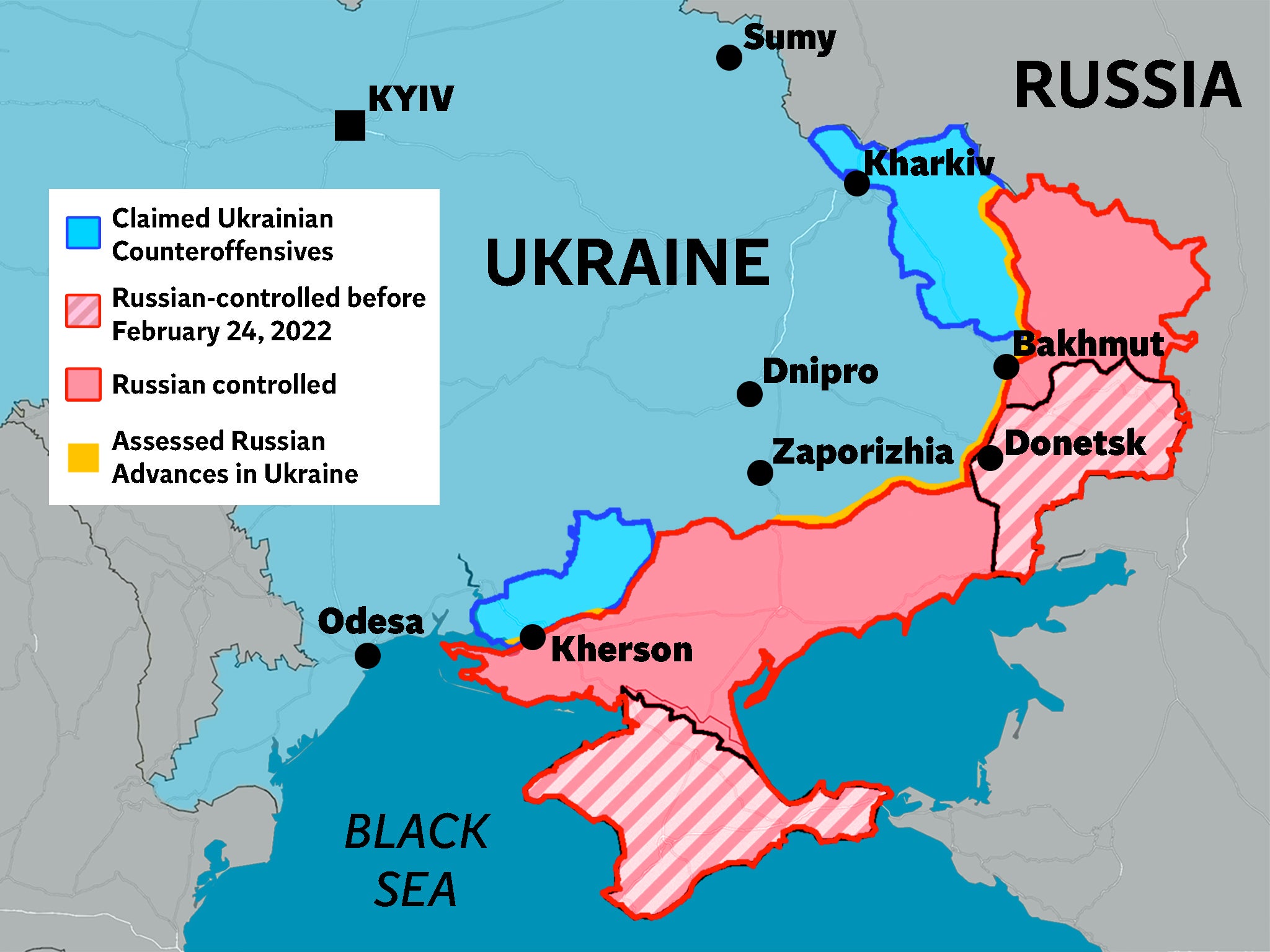
Here is how the last 12 months unfolded:
February 2022
24 February
President Putin launches an invasion of Ukraine from the north, east and south. He claims that the "special military operation" is aimed at "demilitarisation" and "denazification" of the country to protect ethnic Russians, prevent Kyiv's Nato membership and to keep it in Russia's "sphere of influence." Ukraine and the West say it's an illegal act of aggression against a country with a democratically elected government – President Zelensky vows his nation will defend itself.
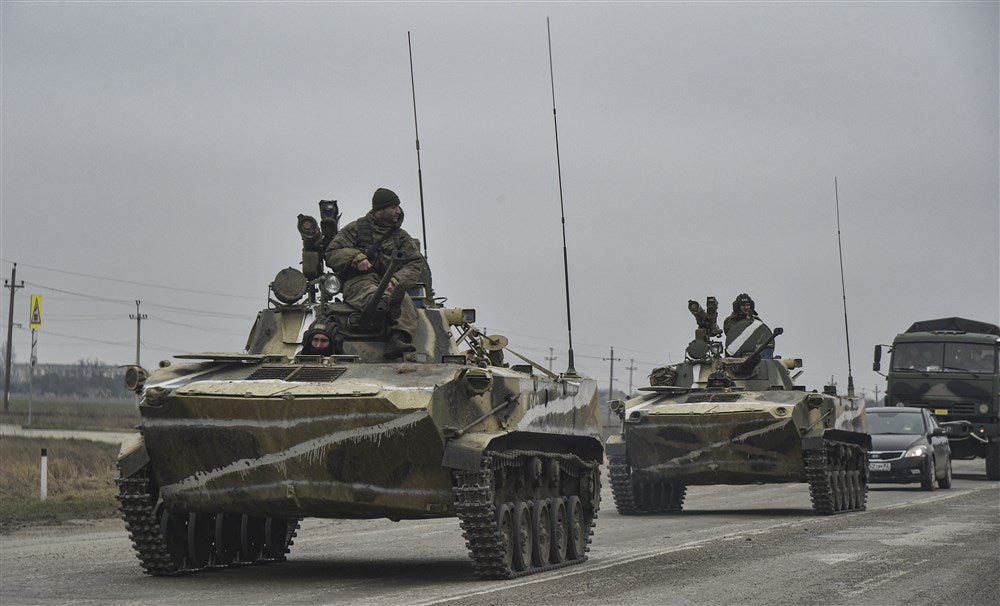
Russian troops quickly reach Kyiv's outskirts, but their attempts to capture the capital and other cities in the northeast meet stiff resistance. Mr Zelensky records a video outside his headquarters to show he is staying and remains in charge.
26 to 27 February
President Zelensky refuses a US offer to evacuate, saying: “The fight is here; I need ammunition, not a ride”.
Russia’s assault on Kyiv, the eastern city of Kharkiv and Chernihiv in the north stalls as Ukrainian defenders target supply vehicles with Javelin missiles.
The European Union bans selected Russian banks from parts of the international banking system and freezes Russian central bank deposits. It also bans Russian aircraft from EU airspace.
28 February
President Zelenskyy officially signs an application for Ukraine's membership in the European Union.
March
2 March
Russia claims control of the southern city of Kherson.
In the opening days of March, Russian forces also seize the rest of the Kherson region and occupy a large part of the neighboring Zaporizhzhia region, including the Zaporizhzhia nuclear power plant, Europe's largest.
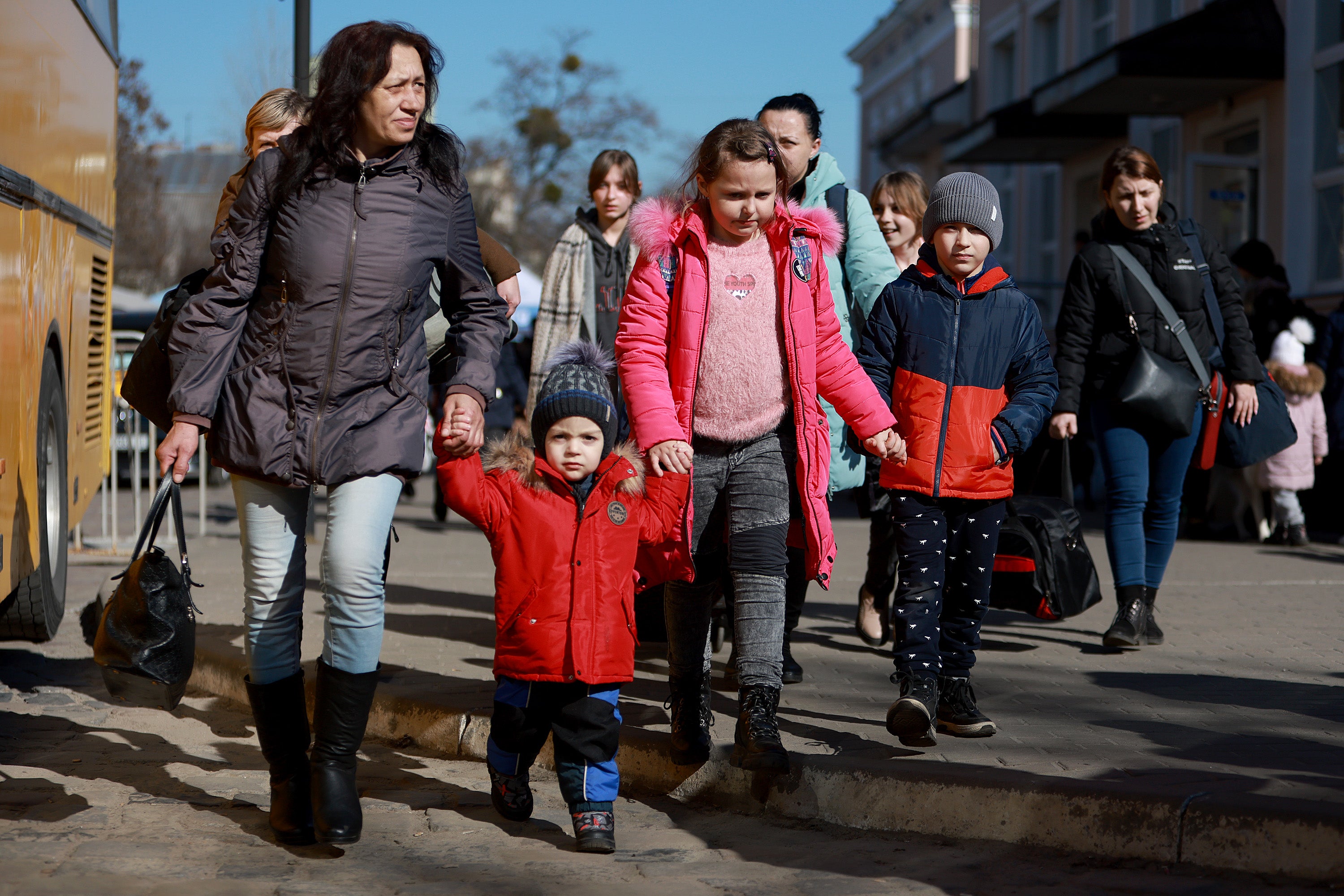
The Russian army soon gets stuck near Kyiv, and its convoys — stretching along highways leading to the Ukrainian capital — become easy prey for Ukrainian artillery and drones.
11 March
The EU issues the Versailles Declaration in response to the Ukraine war, calling for member states to strengthen defence spending.
16 March
Russia strikes a theatre in the strategic port city of Mariupol where civilians had been sheltering, killing hundreds of people in one of the war's deadliest attacks.

29 March
Moscow announces the withdrawal of forces from Kyiv and other areas saying it will focus on the eastern industrial heartland of the Donbas, where Russia-backed separatists have fought Ukrainian forces since 2014 following the illegal annexation of Crimea.
April
Opening days
The Russian pullback from Kyiv reveals hundreds of bodies of civilians in mass graves or left in the streets of the town of Bucha, outside the capital. Many of them bear signs of torture in scenes that prompt world leaders to say Russia should be held accountable for possible war crimes.
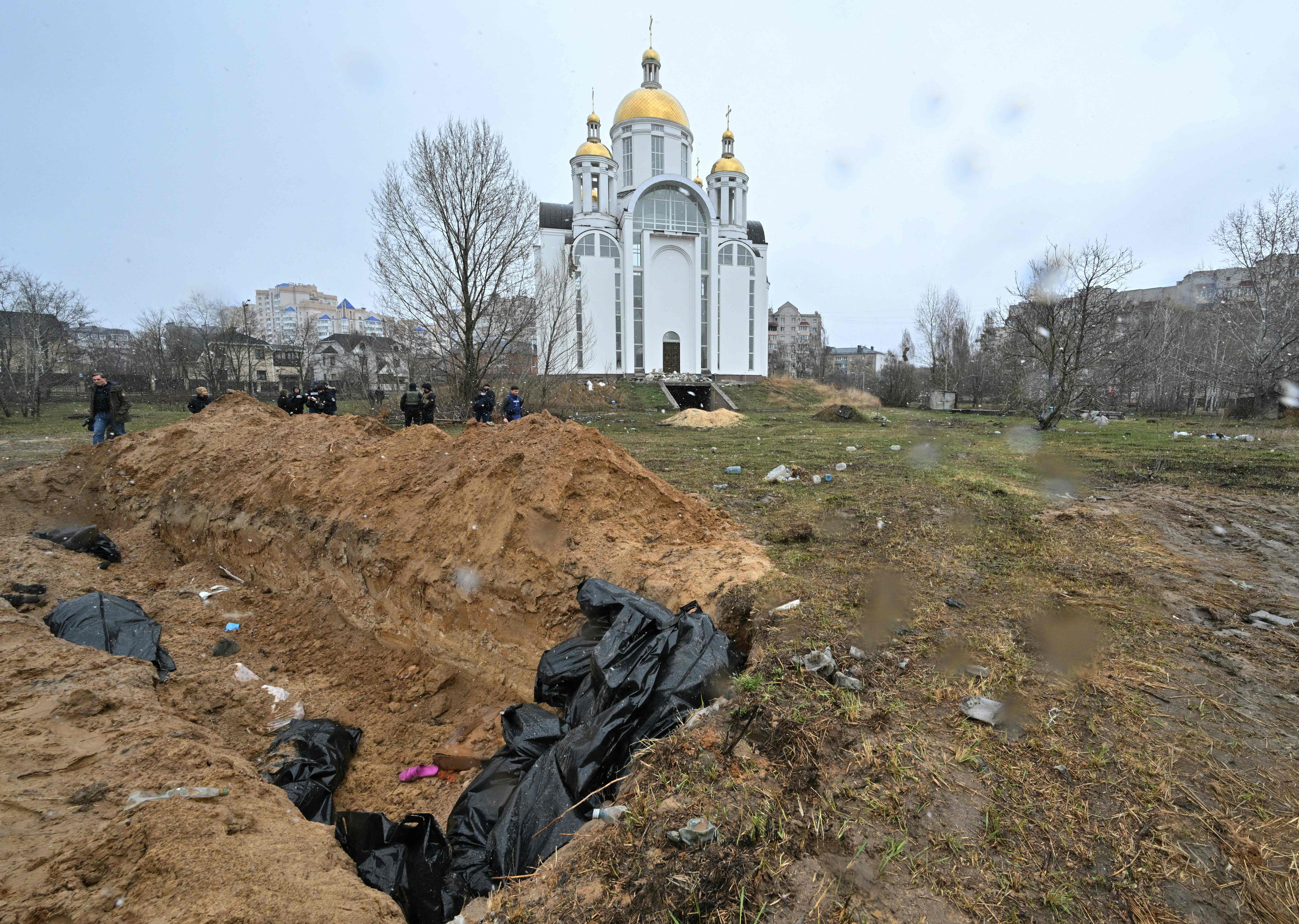
7 April
The UN General Assembly votes to suspend Russia from the organisation’s Human Rights Council.
8 April
A Russian missile strike on a train station in the eastern city of Kramatorsk kills 52 civilians and wounds more than 100.
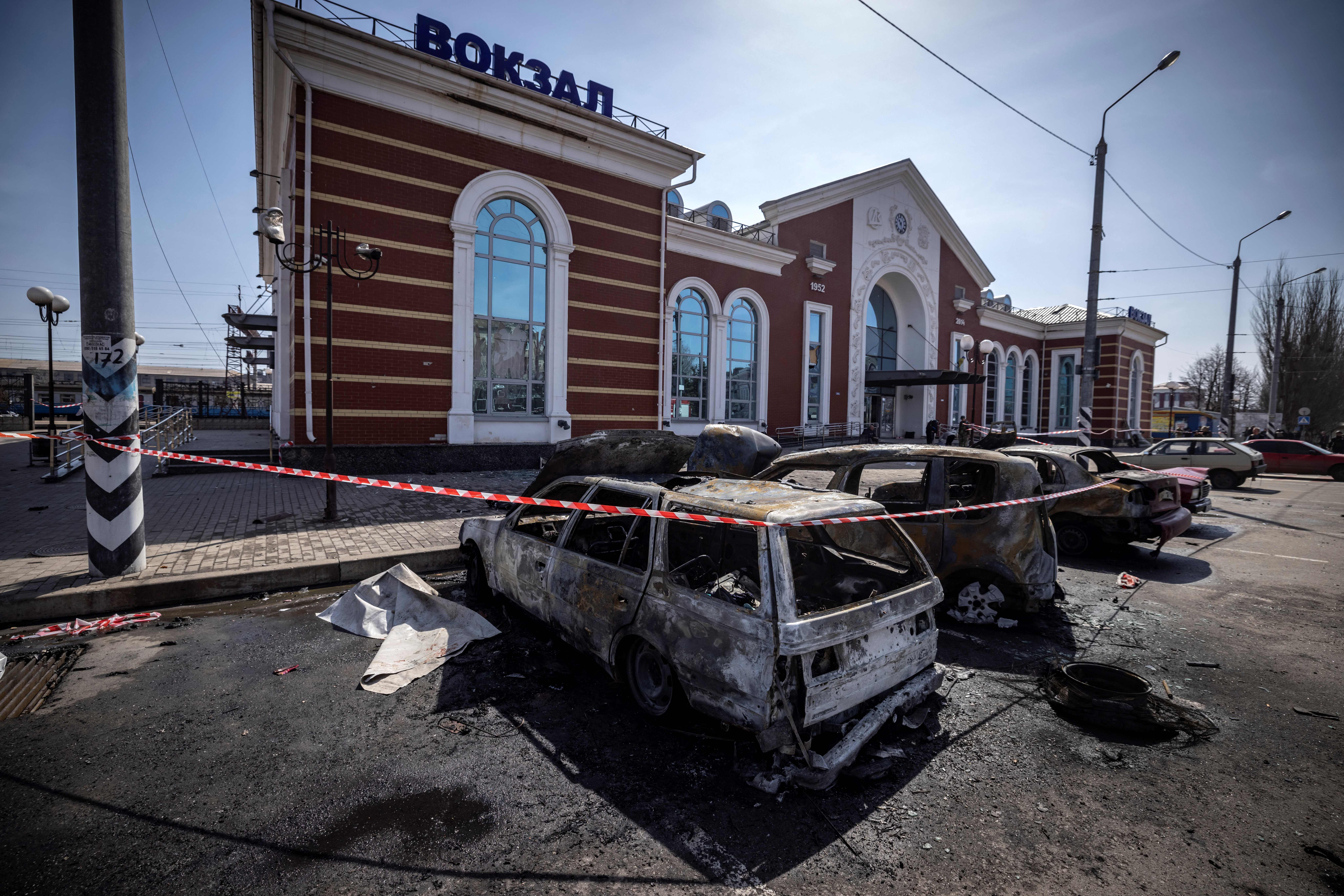
9 April
Then-Prime minister, Boris Johnson makes the first of a number of visits to Kyiv. Many, many world leaders will visit the city over the 12 months of the invasion
Intense battles rage for Mariupol on the Sea of Azov, and Russian air strikes and artillery bombardment reduce much of it to ruins.
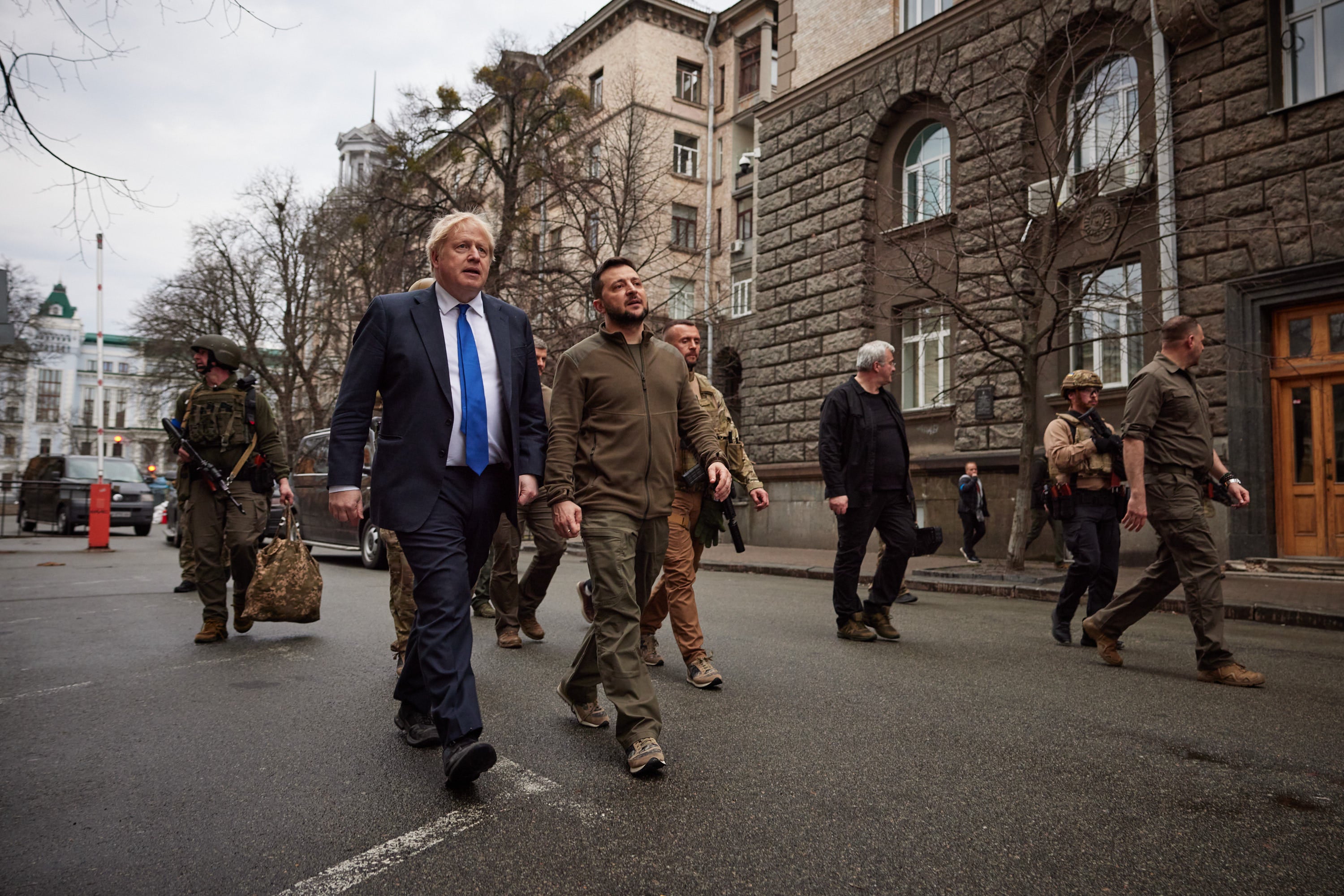
13 April
The missile cruiser Moskva, the flagship of the Russian Black Sea Fleet, is hit by Ukrainian missiles and sinks the next day, damaging Russian national pride.
May
12 May
The United Nations High Commissioner for Refugees (UNHCR) says the number of Ukrainian refugees has passed the six-million mark.
16 May
Ukrainian defenders of the giant Azovstal steel mill, the last remaining Ukrainian stronghold in Mariupol, agree to surrender to Russian forces after a nearly three-month siege. Mariupol's fall cuts Ukraine off from the Azov coast and secures a land corridor from the Russian border to Crimea.
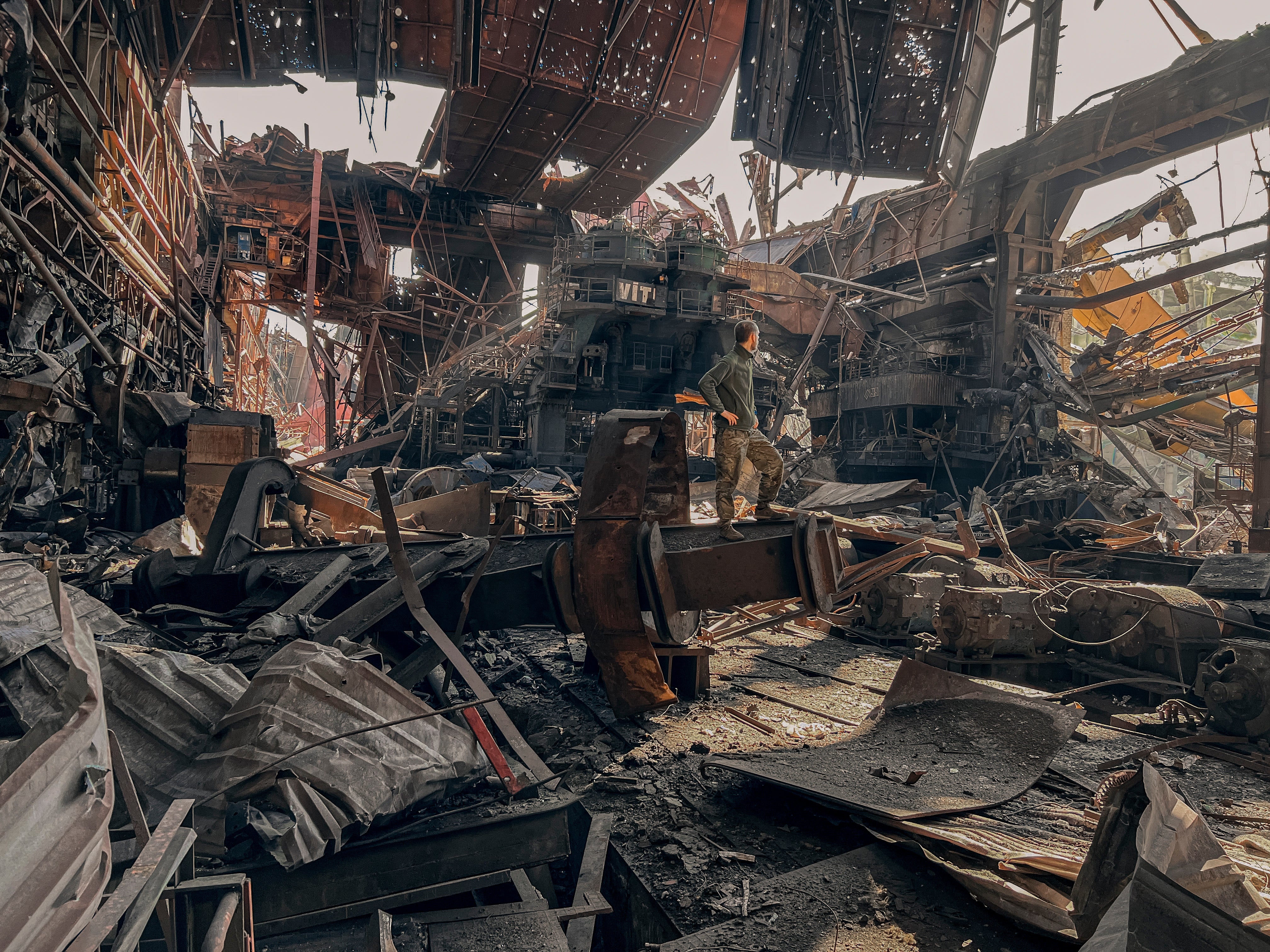
18 May
Finland and Sweden submit their applications to join Nato in a major blow to Moscow over the expansion of the military alliance.
21 May
Russia’s defence ministry announces it has full control of Mariupol, following the evacuation of 1,908 defenders of the Azovstal plant there, a month after Vladimir Putin declared victory over the city.
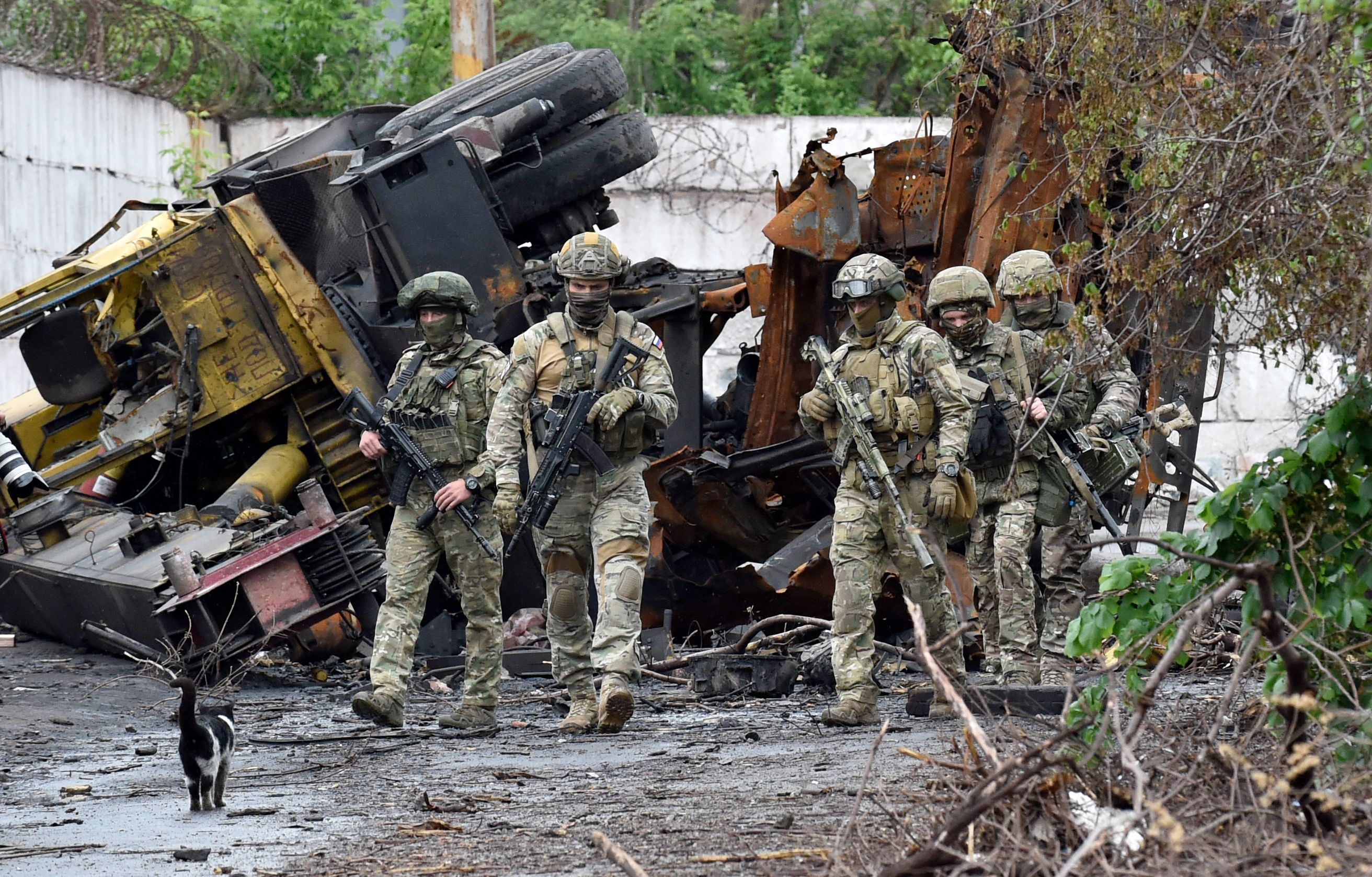
31 May
US President Joe Biden decides to send “more advanced rocket systems” to Ukraine to enable greater precision artillery raids. The US will send High Mobility Artillery Rocket Systems (HIMARS) which go on to have a major impact on Ukraine's defence of its land.
June
6 June
The UK announces it will send M270 multiple launch rocket systems with 80km (49.7 mile) range to Ukraine.
27 June
Nato Secretary-General Jens Stoltenberg says the alliance is to increase its Response Force (NRF) – which can be deployed quickly in the face of attack – from 40,000 troops to 300,000.
29 June
Nato formally invites Finland and Sweden to become members of the alliance, after Turkey lifts its veto related to its own diplomatic issues with Sweden.
30 June
Russian troops pull back from Snake Island, located off the Black Sea port of Odesa and seized in the opening days of the invasion.
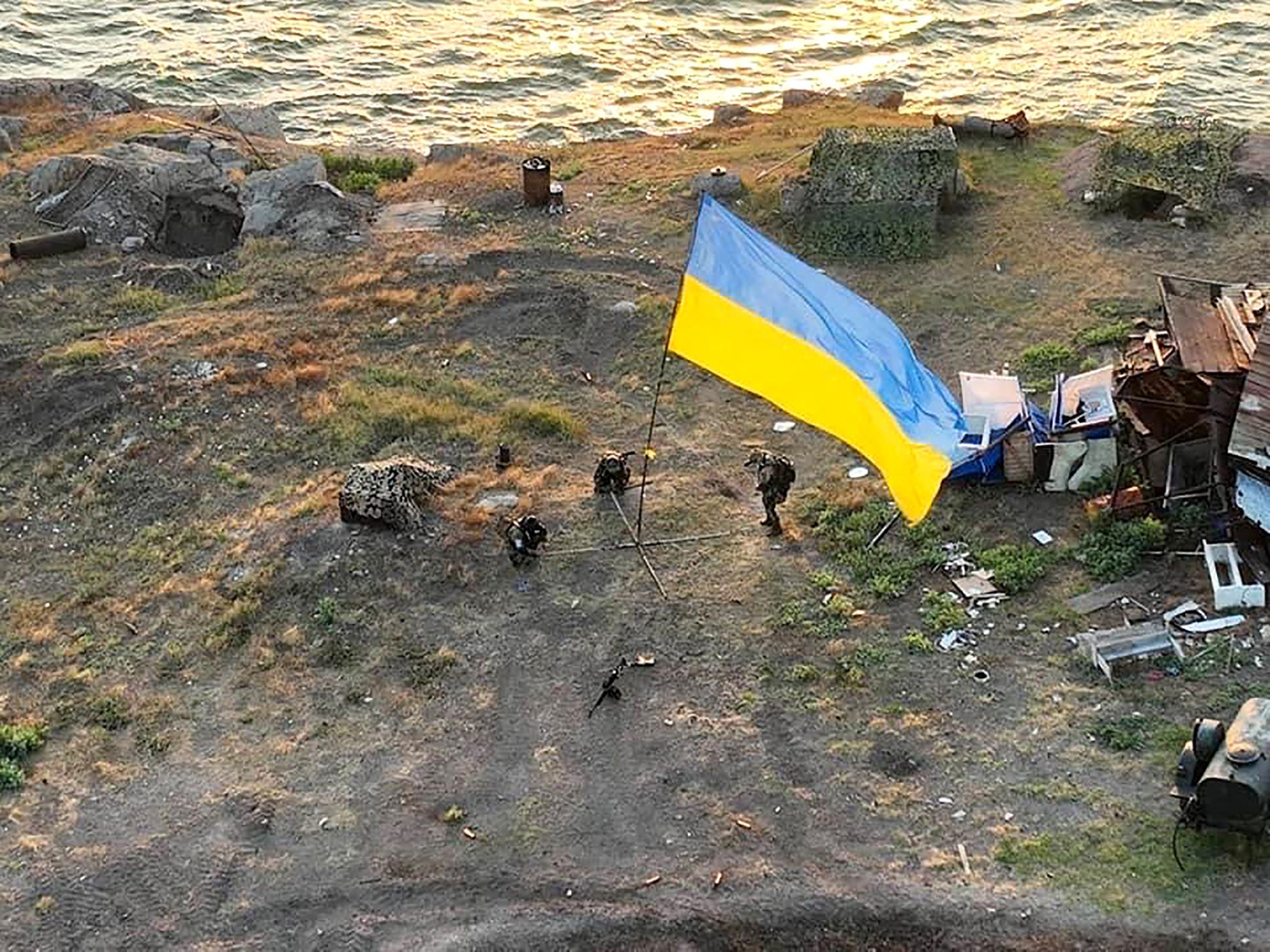
July
22 July
Russia and Ukraine, with mediation by Turkey and the United Nations, agree on a deal to unblock supplies of grain stuck in Ukraine's Black Sea ports, ending a standoff over a Russian blockade that threatened global food security.
26 July
Russian state company Gazprom says it will halve gas supply through the Nord Stream 1 pipeline to 20 per cent of capacity, having previously cut supply to 40 per cent the previous month. EU energy ministers agree to voluntarily reduce the use of natural gas by 15 per cent between August this year and March 2023.
29 July
A missile strike hits a prison in the Russia-controlled eastern town of Olenivka where Ukrainian soldiers captured in Mariupol were held, killing at least 53. Ukraine and Russia trade blame for the attack.
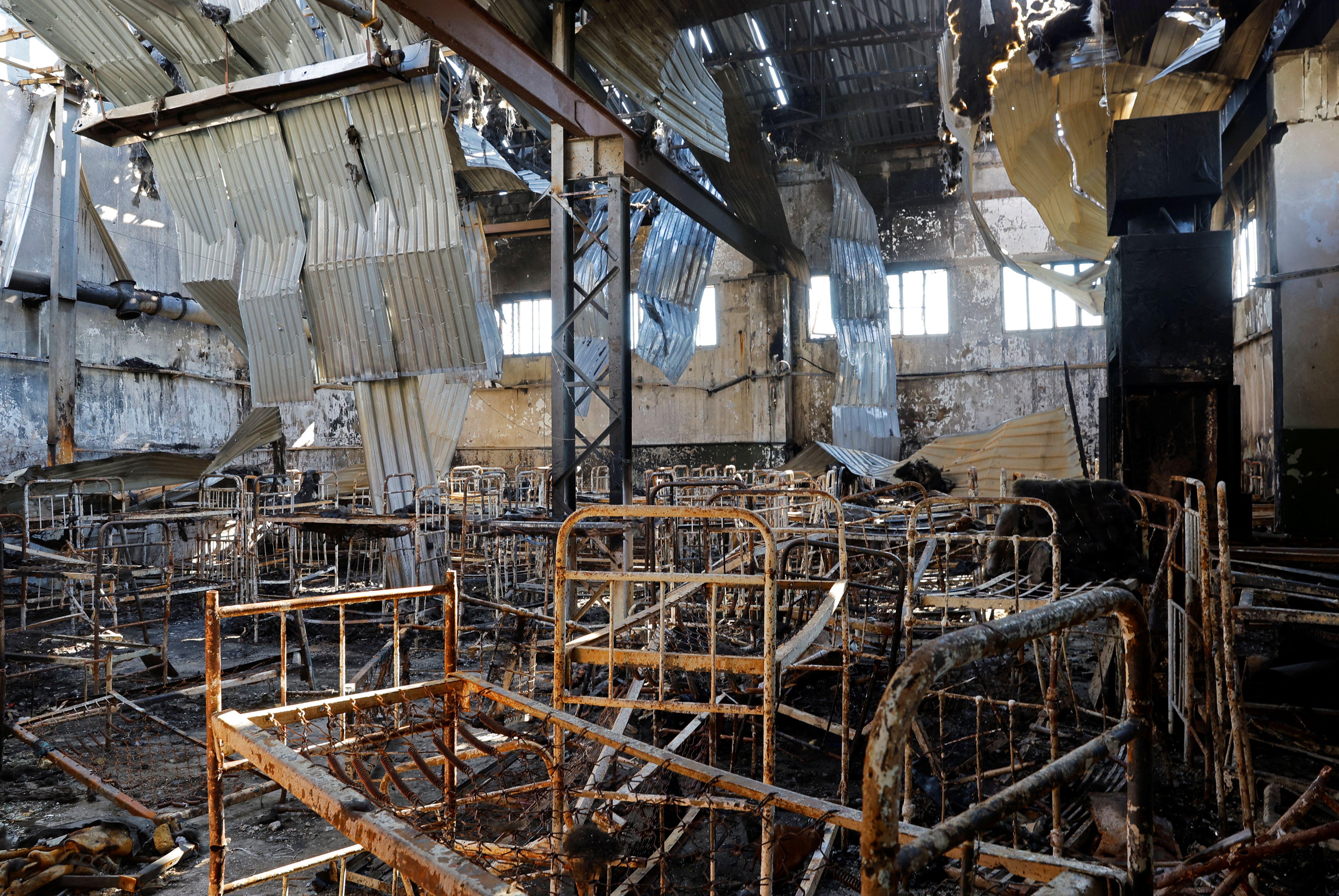
August
1 August
The first ship loaded with Ukrainian grain leaves port following a July 22 agreement to lift a Russian blockade.
9 August
Powerful explosions strike an air base in Crimea. More blasts hit a power substation and ammunition depots there a week later. signaling the vulnerability of the Moscow-annexed Black Sea peninsula that Russia has used as a major supply hub for the war. Ukraine's top military officer later acknowledges that the attacks on Crimea were launched by Kyiv's forces.
20 August
Darya Dugina, the daughter of Russian nationalist ideologist Alexander Dugin, dies in a car bomb explosion outside Moscow that the Russian authorities blame on Ukraine, without evidence.
24 August
Ukraine marks its day of independence from Soviet rule and the six-month anniversary of Russia’s full-scale invasion. Public celebrations are cancelled amid fears that Russia could escalate attacks to coincide with the day, but President Zelensky gives a defiant speech, saying Ukraine was “reborn” when Russia invaded: “We don’t care what army you have, we only care about our land. We will fight for it until the end.”

September
6 September
The Ukrainian forces launch a surprise counteroffensive in the northeastern Kharkiv region, quickly forcing Russia to pull back from broad areas held for months.
21 September
President Putin orders mobilization of 300,000 reservists, an unpopular move that prompts hundreds of thousands of Russian men to flee to neighboring countries to avoid recruitment. At the same time, Russia hastily stages illegal "referendums" in Ukraine's Donetsk, Luhansk, Kherson and Zaporizhzhia regions on whether to become part of Russia. The votes are widely dismissed as a sham by Ukraine and the West.
30 September
President Putin signs documents to annex the four regions at a Kremlin ceremony.
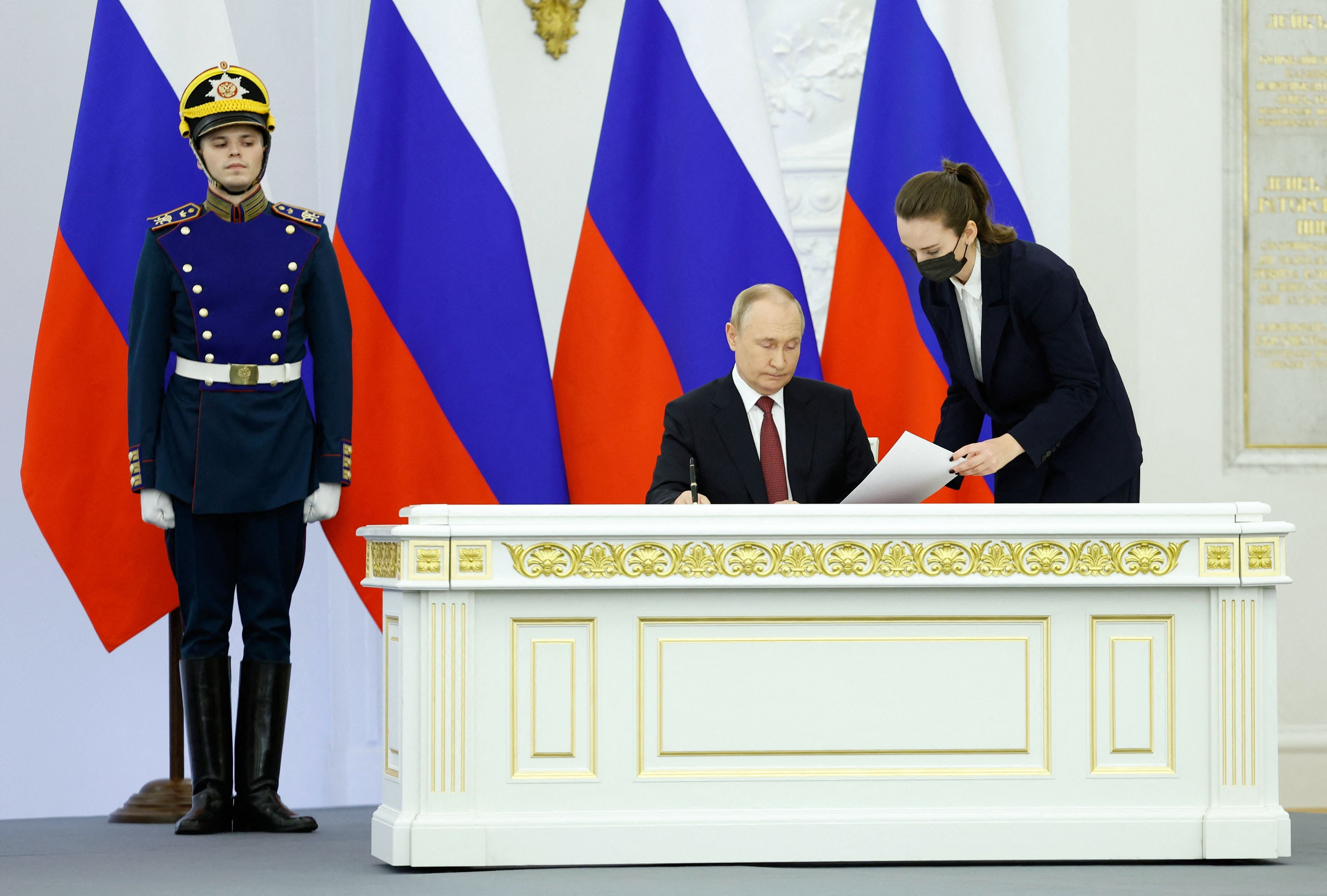
October
8 October
A truck laden with explosives blows up on the bridge linking Crimea – which Moscow illegally annexed from Ukraine in 2014 – to Russia's mainland in an attack that President Putin blames on Ukraine. Russia responds with missile strikes on Ukraine's power plants and other key infrastructure.
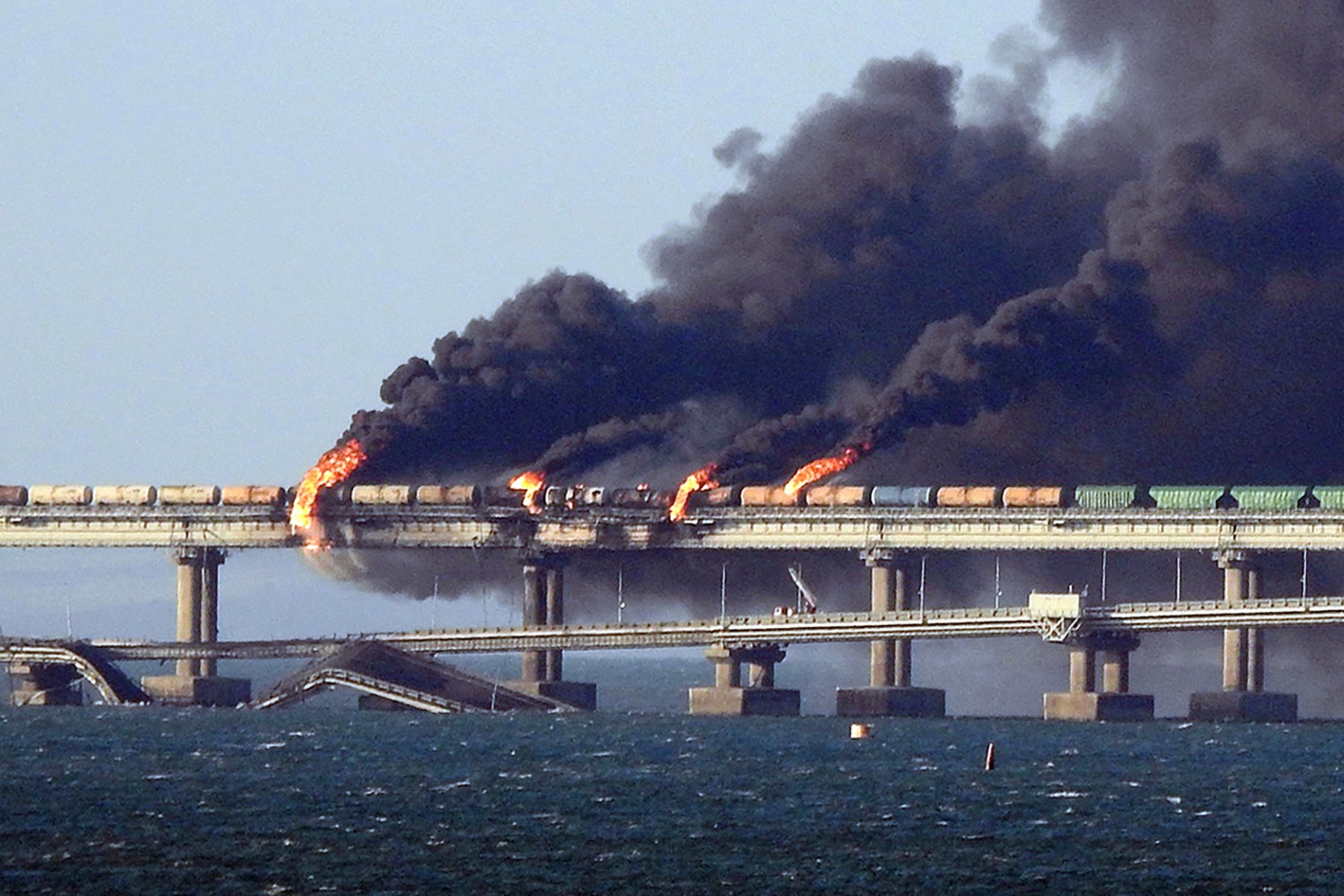
After the first wave of attacks on 10 October the barrage continues on a regular basis in the months that follow, resulting in blackouts and power rationing across the country.
November
9 November
Russia announces a pullback from the city of Kherson under a Ukrainian counteroffensive, abandoning the only regional center Moscow captured, in a humiliating retreat for the Kremlin.
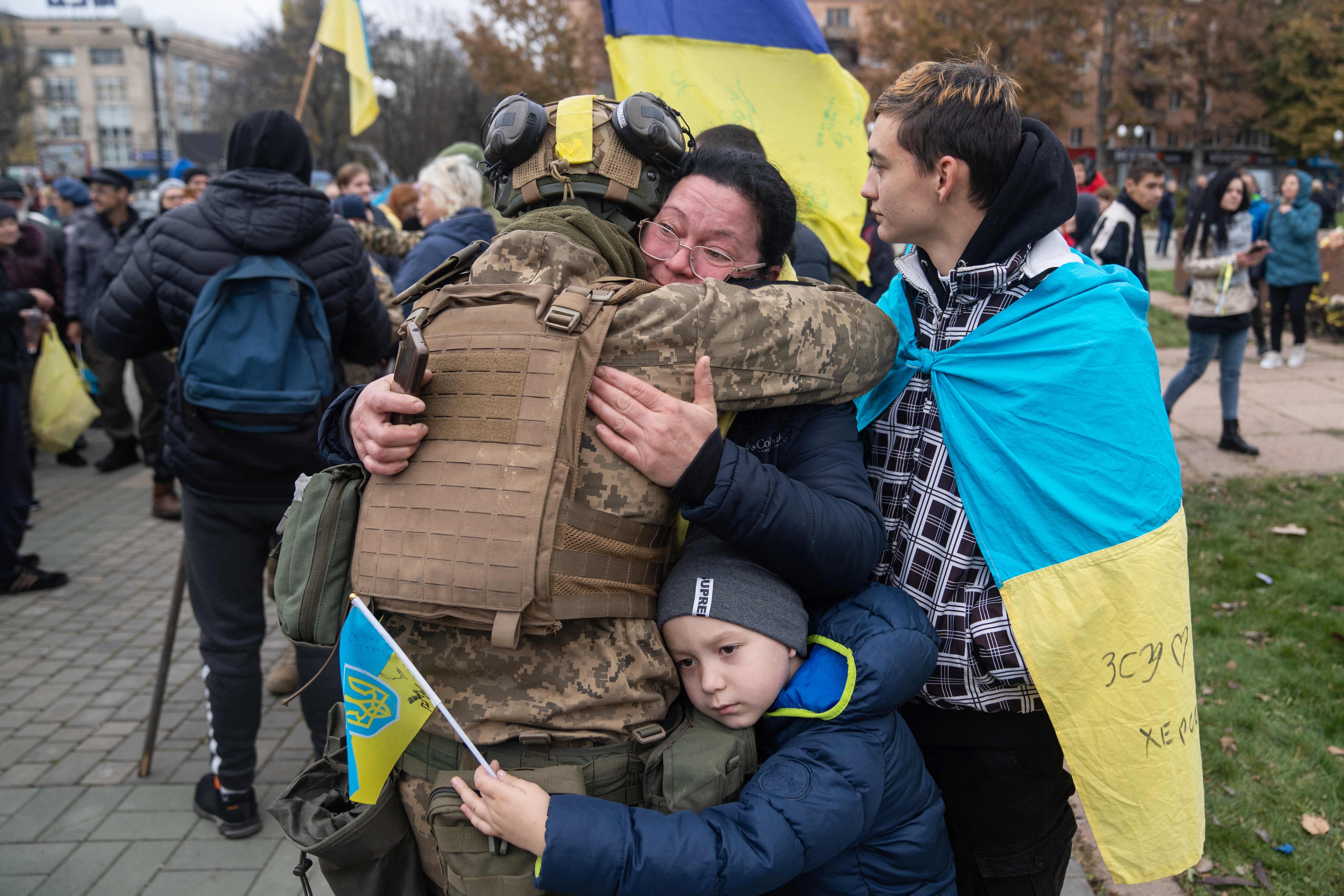
December
5 December
The Russian military says Ukraine used drones to target two bases for long-range bombers deep inside Russian territory. Another strike takes places later in the month, underlining Ukraine's readiness to up the ante and revealing gaps in Russian defenses.
21 December
President Zelensky visits the United States on his first trip abroad since the war began, meeting with President Joe Biden to secure Patriot air defense missile systems and other weapons and addressing Congress.
January 2023
1 January
Just moments into the New Year, scores of freshly mobilised Russian soldiers are killed by a Ukrainian missile strike on the city of Makiivka. Russia's Defense Ministry says 89 troops were killed, while Ukrainian officials put the death toll in the hundreds.

5 Jan
Ukraine rejects calls from President Putin for a 36-hour ceasefire to mark Orthodox Christmas, from 6 to 7 January.
12 January
After months of ferocious fighting, Russia declares the capture of the salt-mining town of Soledar in the eastern Donetsk region, although Kyiv does not acknowledge it until days later. The town, part of a route into the wider Donetsk region that Mr Putin wants to control. Moscow also presses its offensive to seize the Ukrainian stronghold of Bakhmut, near Soledar. The fight for Bakhmut continues still.
14 Jan
When Russia launches another wave of strikes on Ukraine's energy facilities, a Russian missile hits an apartment building in the city of Dnipro in central Ukraine that has been a frequent target of missile assault. At least 45 are killed.
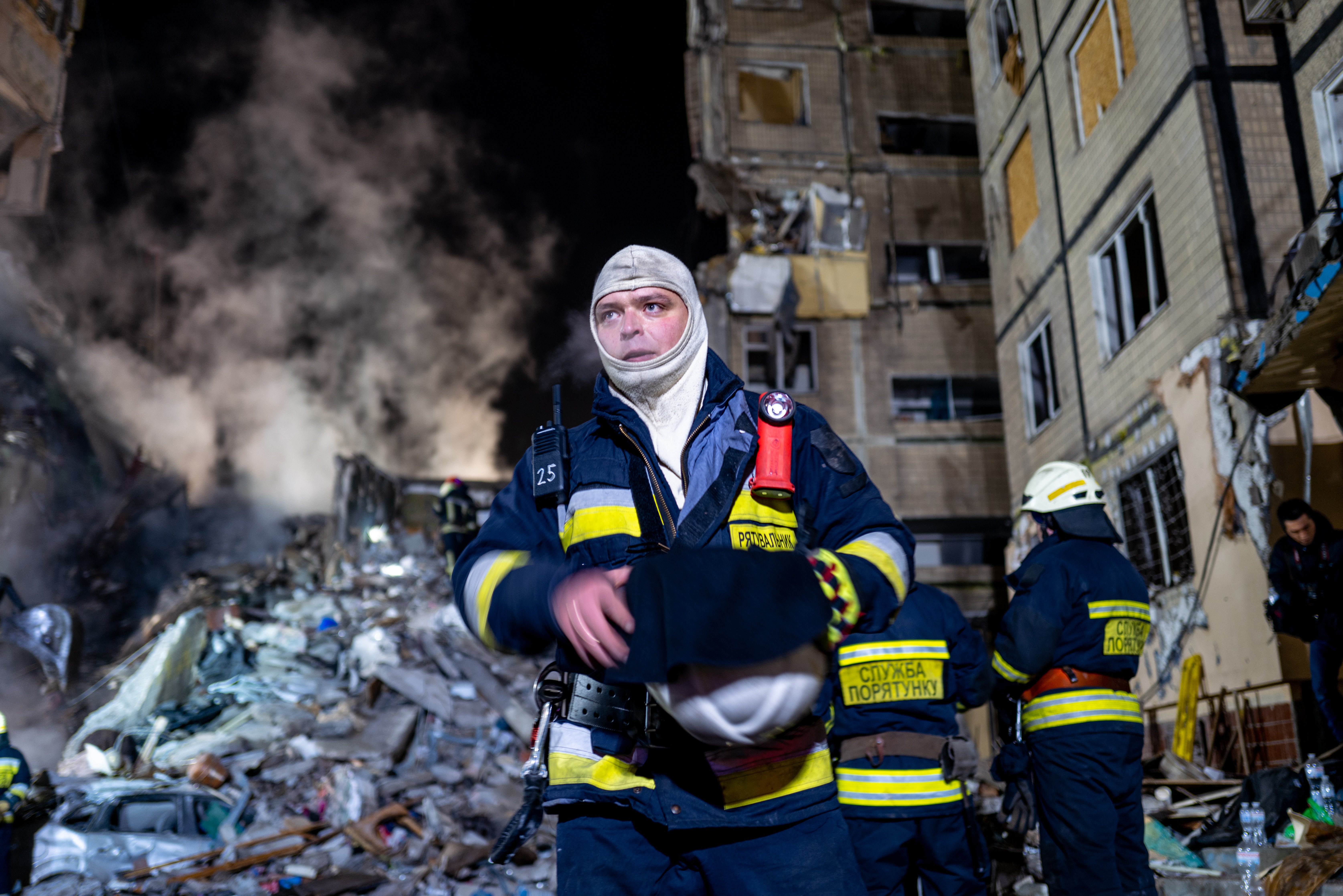
15 January
The UK announces it will send 14 Challenger 2 tanks to Ukraine to bolster the country's war effort,
Prime Minister Rishi Sunak speaks to President Zelensky in a call during which he confirmed he would send the equipment and additional artillery systems.
Downing Street says the move shows "the UK's ambition to intensify support."
18 January
At least 14 people, including Ukraine’s interior minister, Denys Monastyrsky, and other senior officials were killed after a helicopter crashed by a nursery in a suburb of Kyiv.
25 Jan
President Biden approves sending 31 US-made M1 Abrams tanks to Ukraine. The reversal of the US’s previous position came after Germany confirmed it will make 14 of its Leopard 2A6 tanks available for Ukraine’s war effort, and give partner countries its permission to re-export other battle tanks to aid Kyiv.
In the last couple of weeks of the month, President Zelensky ramps up an anti-corruption drive as more than 15 Ukrainian officials exit their posts.
February
The month is marked by intense fighting in Bakhmut and others areas around Donetsk and Luhansk as Russia steps up its assault.
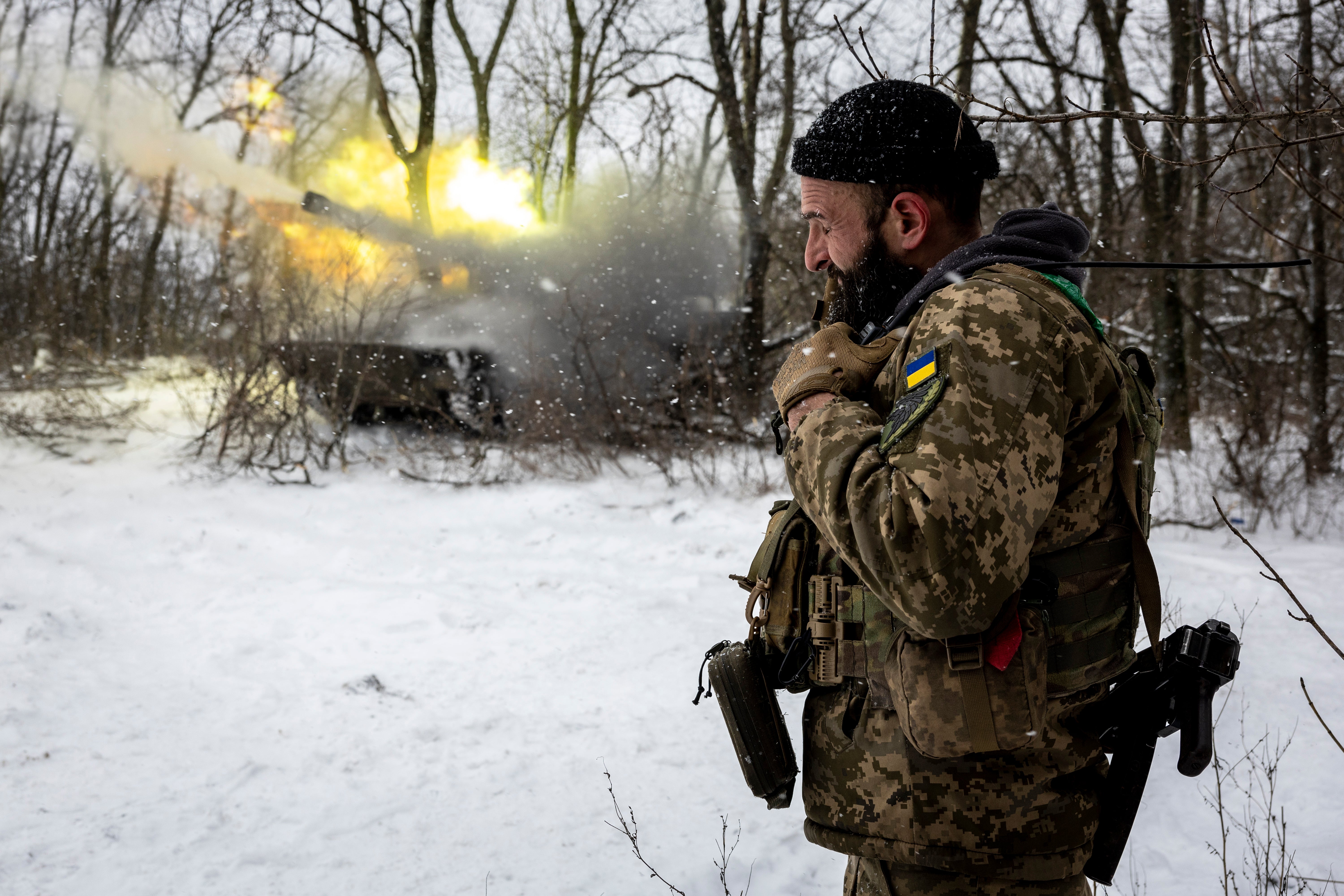
8 February
The Ukrainian president, Volodymyr Zelenskiy, made a surprise visit to the UK and addresses parliament, before heading onto France and then a meeting with EU leaders. Having received a number of pledges on tanks – Mr Zelensky is pushing for fighter jets to be delivered next. There has still be no decision on that by Western allies.
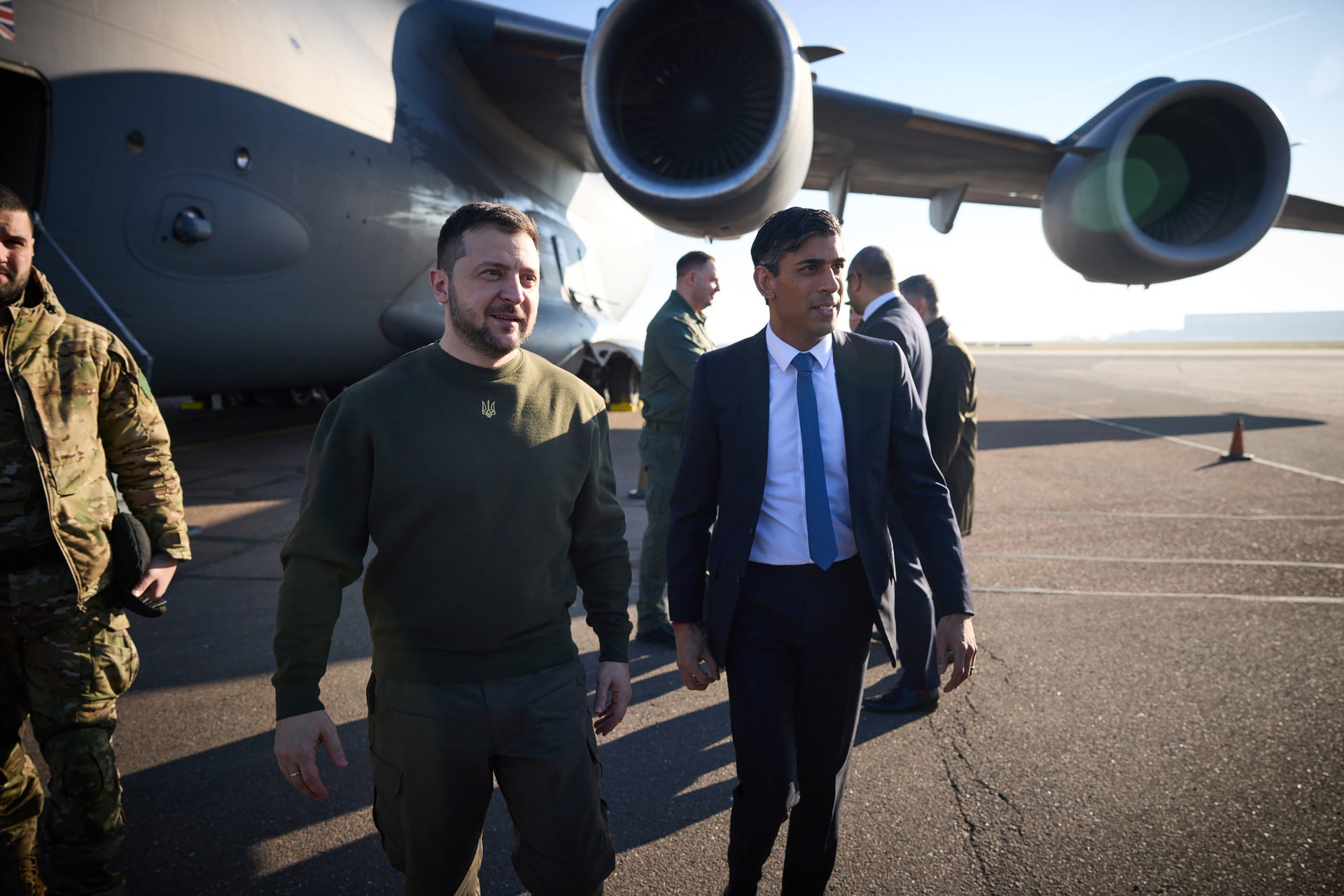
20 February
President Biden makes a surprise visit to Kyiv where he meets with President Zelensky in a remarkable and defiant display of solidarity.
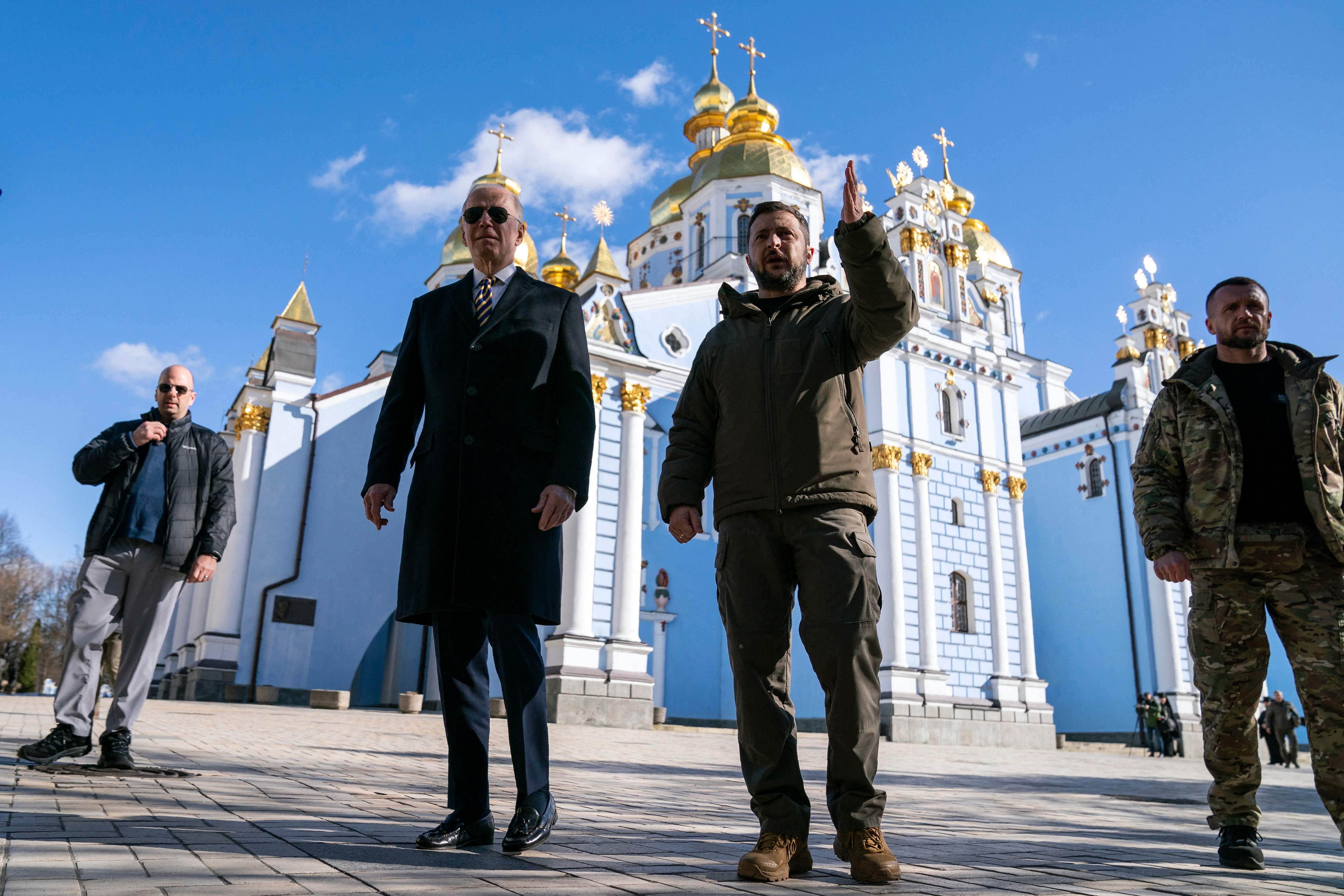
21 Feb
Vladimir Putin says Russia will halt its participation in New Start, the last major remaining nuclear arms control treaty with the US, saying that he cannot ignore actions by the US and the West at large over Ukraine
22 February
President Putin welcomes China's top diplomat, Wang Yi, to the Kremlin, and announces that Chinese leader Xi Jinping would visit Russia, saying relations had reached "new frontiers". The US has said it is worried that Beijing could provide weapons to Moscow.
Associated Press contributed to this report







